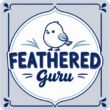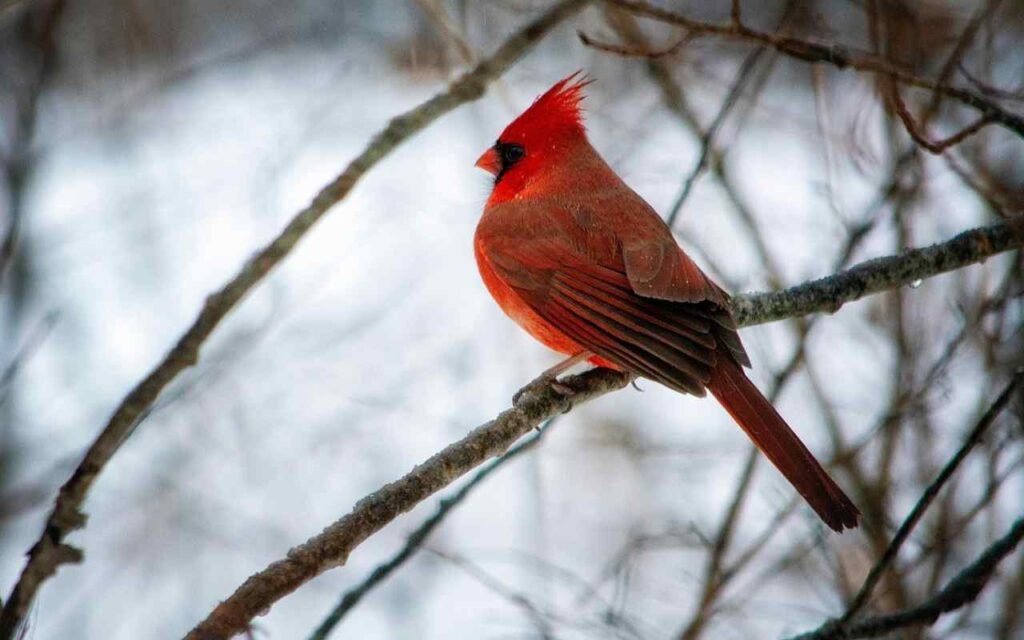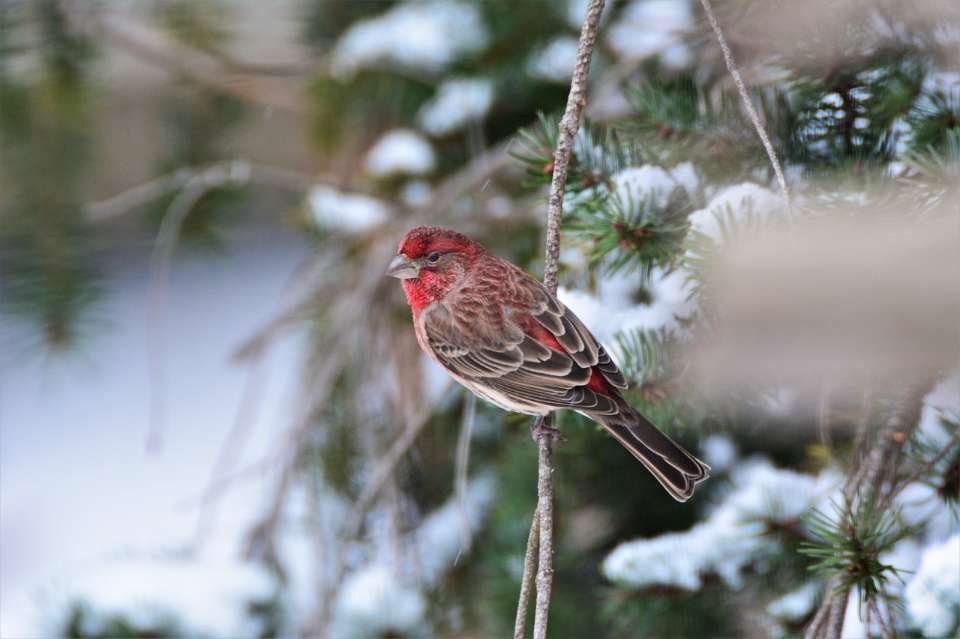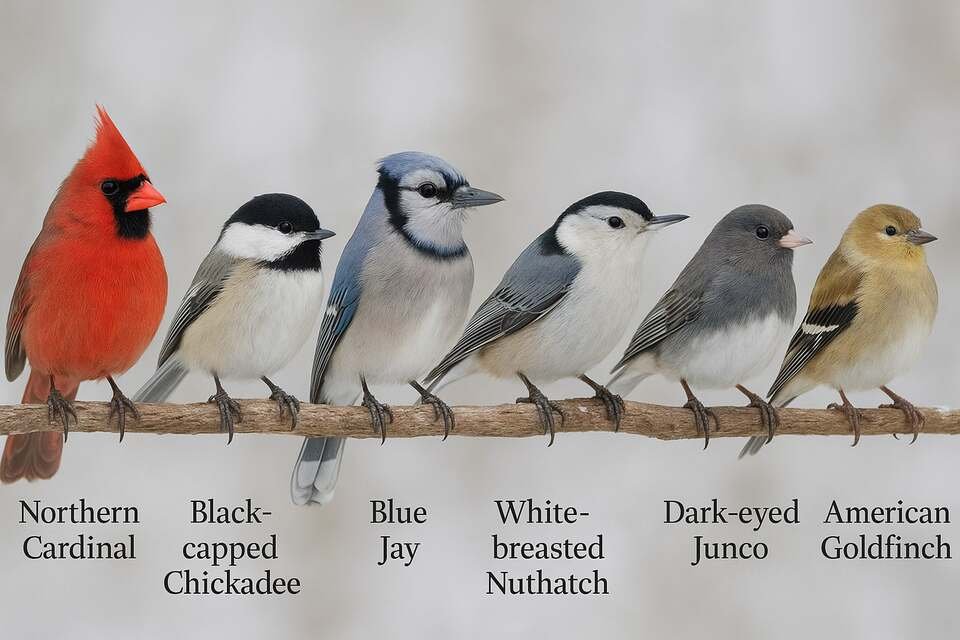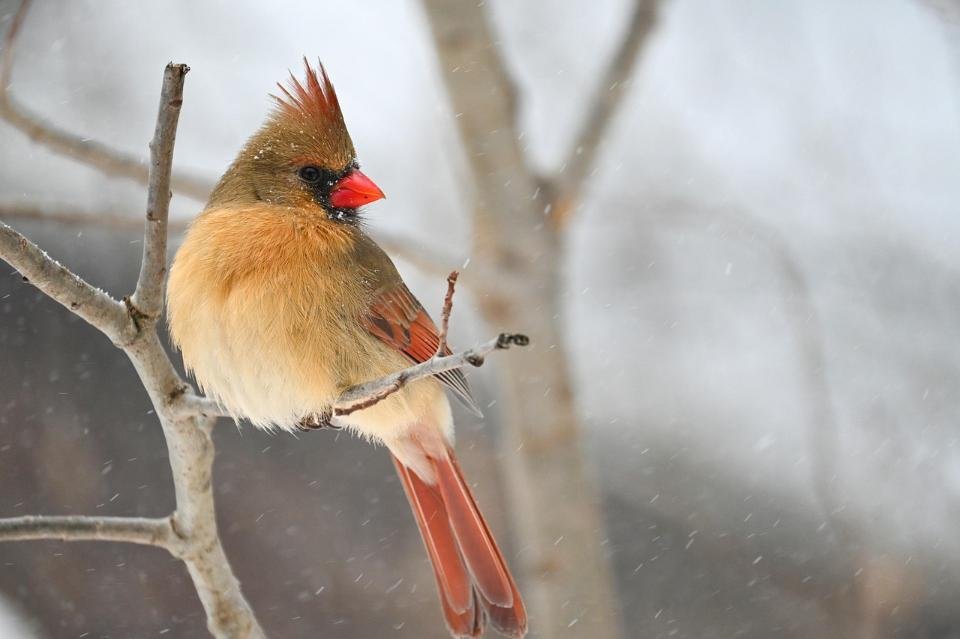Picture this: you’re sipping your morning coffee, staring out the window at your snow-covered backyard, when suddenly a flash of red catches your eye. Is that a cardinal? Or maybe something else entirely? If you’ve ever found yourself squinting through frosty windows trying to figure out what feathered friends are visiting your yard, you’re definitely not alone. That’s where winter bird identification comes in.
Winter bird watching hit me like a lightning bolt three years ago when I spotted what I thought was a “weird robin” pecking around my bird feeder. Turns out, it was an American Robin’s winter cousin – and I had no clue what I was looking at. That embarrassing moment sparked my obsession with identifying winter birds in your backyard, and honestly? It’s become my favorite cold-weather hobby 🙂.
Mini Quick ID Table
| Bird | Key Feature |
|---|---|
| Cardinal | (Medium-sized) Bright red male, brown female |
| Chickadee | (Small) Black cap, white cheeks, acrobatic |
| Blue Jay | (Medium to Large) Bright blue, loud, dominates feeders |
| Junco | (Small) Gray with white belly, hops on ground |
| Nuthatch | (Small) Walks headfirst down trees |
Why Winter Bird Identification Matters More Than You Think
Here’s the thing about backyard winter birds – they’re actually easier to spot than their summer counterparts. No leaves blocking your view, fewer species to confuse you with, and these tough little guys are usually more desperate for food, making them bolder visitors to your feeders.
But let’s be real – most of us can barely tell a sparrow from a finch on a good day, let alone when everything’s covered in snow. That’s where this whole winter bird identification thing gets interesting. You don’t need to become some ornithology expert overnight. You just need to know what to look for.
I remember my neighbor laughing at me for taking pictures of “just some boring brown bird” last winter. Joke’s on him – that “boring brown bird” turned out to be a rare Fox Sparrow, and spotting it made my entire month. The point? Every bird has a story, and winter makes those stories easier to read.
The Basics of How to Identify Winter Birds in Your Garden
Common birds in winter share some pretty obvious survival traits that make identification surprisingly straightforward. These birds have adapted to cold weather in ways that actually help us distinguish them from their fair-weather friends. According to the National Audubon Society, many winter bird species fluff their feathers and increase foraging activity to maintain body heat in cold conditions.
First thing you’ll notice? Cold weather birds tend to be chunkier. They fluff up their feathers for insulation, making them look like tiny feathered bowling balls. This isn’t just cute – it’s your first identification clue.
Color patterns also become super important in winter. While spring and summer birds show off with bright breeding plumage, winter visitors keep things practical. Think muted browns, grays, and the occasional flash of red or yellow. These colors help them blend into bare branches and snow-covered landscapes.
Size matters too, but here’s where most people mess up – they try to guess exact measurements. Instead, compare birds to familiar objects. Is it smaller than a robin? Bigger than a sparrow? About the size of your smartphone? These relative comparisons work way better than trying to estimate inches.
Identifying Winter Birds in Your Backyard: The Foolproof Method
Ready for my secret weapon? I call it the SHAPE method – and before you roll your eyes at another acronym, hear me out. This actually works.
S is for Silhouette. Every bird family has a distinctive body shape. Cardinals look chunky with prominent crests. Chickadees are round and compact. Woodpeckers have that classic elongated look with sturdy necks.
H stands for Head features. Check out the beak shape first – is it thick and seed-cracking (like a cardinal), thin and insect-probing (like a nuthatch), or somewhere in between? Then look at head patterns. Does it have stripes, caps, or distinctive markings around the eyes?
A means Action and behavior. How does the bird move? Does it hop along the ground like a junco, or does it creep headfirst down tree trunks like a nuthatch? Behavior tells you more about bird identity than colors ever will.
P is for Patterns and colors. Now you can focus on specific markings. Wing bars, chest spots, tail patterns – these details confirm what the other clues already suggested.
E represents Environment preferences. Where exactly did you spot the bird? Ground feeders, tree climbers, and aerial acrobats all have different hangout spots that narrow down your identification options.
This method saved me countless hours of flipping through field guides, trying to match fuzzy photos with crystal-clear illustrations that never quite looked right.
Winter Bird Watching Tips That Actually Work
Let’s talk timing, because spotting birds in snow isn’t just about luck. Early morning and late afternoon give you the best action. Birds are hungriest then, and the lower sun angle creates better lighting for photography and observation.
Weather plays a huge role too. Right after snowstorms, birds get desperate for food and become less cautious. I’ve spotted more rare species during these post-storm feeding frenzies than during months of casual observation.
Your feeder setup makes or breaks your winter birding experience. Multiple feeder types attract different species – tube feeders for small songbirds, platform feeders for ground-feeding species, and suet feeders for woodpeckers and nuthatches.
According to the Cornell Lab of Ornithology, using a variety of feeder types attracts a broader range of species and helps reduce competition among birds at feeding stations.
Here’s something most people don’t consider: water sources become gold mines in winter. A heated birdbath or even a shallow dish with fresh water will draw birds from surprising distances. I added a small water feature last winter and tripled my species count within weeks.
According to the National Wildlife Federation, providing fresh, unfrozen water is essential for bird survival during winter months.
The Most Common Winter Backyard Visitors
Northern Cardinals are the obvious superstars of winter birding. Males stay bright red year-round, while females sport warm brown tones with reddish highlights. Both sexes have that unmistakable thick, orange-red beak and prominent crest. The Cornell Lab of Ornithology notes that Northern Cardinals are non-migratory and maintain year-round territories, making them reliable backyard visitors during winter months.
Black-capped Chickadees might be small, but they’re winter warriors. These acrobatic little balls of energy have distinctive black caps and white cheeks, and they’re almost fearless around humans. They’ll often feed from your hand if you’re patient enough.
Dark-eyed Juncos are probably the most overlooked backyard birds ever. These “snowbirds” have slate-gray bodies with bright white bellies and outer tail feathers that flash when they fly. They’re ground feeders, so you’ll usually spot them hopping around under your feeders.
White-breasted Nuthatches are the tree acrobats of winter. They creep headfirst down tree trunks, which is actually their signature move. Look for compact blue-gray bodies with white faces and black caps.
American Goldfinches trade their summer yellow for olive-brown winter coats, but males keep black wings with white wing bars. These small finches travel in flocks and love thistle seed feeders.
Identifying Backyard Birds in Winter: Advanced Techniques
Once you’ve mastered the basics, subtle details start making huge differences. Tail length and shape separate similar species – compare a Carolina Wren’s short, upturned tail to a House Wren’s more balanced proportions.
Flight patterns become identification tools too. Goldfinches have that distinctive undulating flight that looks like they’re riding invisible roller coasters. Woodpeckers fly in choppy waves, while crows maintain steady, purposeful flight paths.
Vocalizations don’t disappear in winter, they just change. Many birds use contact calls to stay connected with flock mates. Learning a few key calls – like the chickadee’s “chick-a-dee-dee” or the nuthatch’s nasal “yank-yank” – adds another identification layer.
Group behavior tells stories too. Mixed flocks of chickadees, nuthatches, and small woodpeckers often travel together through winter territories. Spotting one species usually means others are nearby. According to a study published in ScienceDirect, birds participate in mixed-species foraging flocks primarily to improve feeding efficiency and reduce the risk of predation.
Photography and Record Keeping for Winter Birds
Your smartphone camera works fine for most backyard bird identification, but winter lighting can be tricky. Snow reflects harsh light upward, creating weird shadows and overexposed backgrounds.
Try shooting with the sun behind you when possible, and don’t worry about perfect photos. Even blurry shots capture enough detail for later identification – wing bar patterns, tail length, overall proportions.
Keep a simple list of what you see and when. I use a basic notebook app on my phone, and you’d be amazed how patterns emerge over time. Certain species show up on predictable schedules, and tracking these patterns makes future identification easier.
Creating a Winter Bird Paradise
Strategic feeder placement multiplies your identification opportunities. Position feeders at different heights and distances from shelter. Some species prefer feeding in open areas, while others want quick escape routes to nearby trees.
Feeder variety matters more than feeder quality. Black oil sunflower seeds attract the widest range of species, but adding thistle, suet, and mixed seed creates dining options for different bird families.
Don’t forget about natural food sources. Leave seed heads on your native plants, and avoid cleaning up every fallen branch. These natural elements provide food and shelter that complement your artificial offerings.
Troubleshooting Common Winter Bird ID Challenges
Size estimation trips up everyone, especially beginners. Birds fluff up significantly in cold weather, making familiar species look completely different. That “giant” chickadee might just be a very cold chickadee.
Color variations cause confusion too. Lighting conditions, molt patterns, and regional subspecies create subtle differences that don’t match field guide illustrations perfectly.
Behavior differences emerge in winter survival mode. Normally solitary species might join mixed flocks, and typically aggressive birds might share feeder space peacefully.
When you’re stumped, focus on the most obvious features first. Body shape and size eliminate more possibilities than detailed plumage patterns. Process of elimination works better than trying to match every single field mark.
The Winter Bird Community Connection
Here’s something nobody talks about – winter birding connects you with neighbors in unexpected ways. That lady three houses down who always has the best bird activity? She probably knows tricks worth learning.
Local bird clubs become invaluable resources during winter months. These groups organize winter bird counts, share rare bird sightings, and offer identification help for challenging species.
Social media birding groups provide instant identification assistance too. Post a photo with your location, and experienced birders will usually respond within hours. It’s like having a field guide that talks back.
Beyond Basic Identification: Becoming a Winter Bird Expert
Molt patterns and age determination add advanced identification layers. Many species show different plumages based on age and season, and understanding these variations helps separate similar species. For example, learn why goldfinches change color to see how seasonal plumage can impact identification.
Regional variations matter too. The same species might look slightly different in different parts of the country, and winter brings visitors from far northern regions that might not match your local field guide illustrations.
Habitat preferences within your yard create micro-environments that attract different species. The difference between birds that prefer dense shrubs versus open lawn areas versus tree canopy zones affects what you’ll see and where.
Seasonal Migration Patterns and Winter Residents
True winter residents versus winter visitors behave differently and require different identification approaches. Permanent residents like cardinals and chickadees maintain territories year-round, while winter visitors like juncos and some sparrow species show up in fall and disappear by spring.
Irruptive species create exciting identification challenges during some winters. These birds, including certain finches and northern visitors, appear in large numbers during specific years when northern food sources fail.
Weather-driven movements bring unexpected species to backyard feeders. Major storms, temperature drops, and snow cover push birds into suburban areas where they normally wouldn’t venture.
The Science Behind Winter Bird Adaptations
Understanding physiological adaptations helps explain behavior patterns that aid identification. Birds that can metabolize fatty foods efficiently tend to be suet feeder regulars, while species dependent on seeds show different feeding patterns and timing.
Social structures change dramatically in winter survival mode. Species that maintain pair bonds year-round behave differently from those that form winter flocks, and these behavioral differences become identification clues. According to the Black-capped Chickadee Wikipedia page, mixed-species flocks often include chickadees, nuthatches, and woodpeckers, which benefit from increased foraging efficiency and predator avoidance.
Energy conservation strategies affect activity patterns and feeding behaviors. Birds that cache food behave differently from those that must find fresh food daily, creating predictable observation opportunities.
The whole winter bird identification journey started for me with that embarrassing “weird robin” moment, but it’s become something way more valuable. Every morning now brings potential discoveries, and even the most common backyard visitors reveal new details when you know how to look.
Winter bird watching transforms those long, cold months into adventures waiting right outside your window. You don’t need expensive equipment, years of study, or even a perfectly landscaped yard. You just need curiosity and a willingness to pay attention to the incredible survival stories happening in your own backyard.
So grab that morning coffee, position yourself by the window, and start watching. Trust me – once you correctly identify your first challenging winter bird, you’ll understand why this hobby becomes so addictive. Those feathered visitors aren’t just pretty decorations; they’re wildlife success stories playing out in real-time, and learning to recognize them connects you to the natural world in ways that’ll surprise you.
Who knows? Maybe this winter you’ll be the one laughing when your neighbor calls that rare visitor “just another boring brown bird.” 🙂
